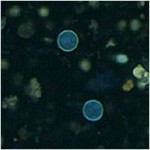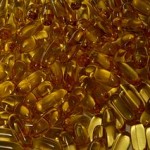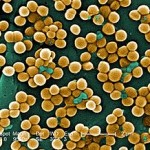
 A recurrent theme of my posts is the increasing danger of antibiotic-resistant germs and the harmful consequences of antibiotic overuse. This week the Centers for Disease Control and Prevention (CDC) released Antibiotic Resistance Threats in the United States, 2013, a detailed report assessing the current state of antibiotic resistance and recommending actions to limit the problem.
A recurrent theme of my posts is the increasing danger of antibiotic-resistant germs and the harmful consequences of antibiotic overuse. This week the Centers for Disease Control and Prevention (CDC) released Antibiotic Resistance Threats in the United States, 2013, a detailed report assessing the current state of antibiotic resistance and recommending actions to limit the problem.
The report begins with an attempt to estimate the current harm from antibiotic-resistant organisms. Using very conservative estimates that are likely to undercount relevant cases, the CDC concludes that over two million people in the US develop infections that are resistant to antibiotics and that over 23,000 deaths result from these infections.
The report also has a diagram explaining the development and spread of antibiotic resistance.
In the mid-90s while I was going through my residency, infections with antibiotic-resistant bacteria were relatively uncommon and were limited to hospitalized patients. Now, as antibiotic resistance is becoming more common, and as hospitals have taken measures to reduce the spread of resistant organisms, more infections with these dangerous organisms are being seen in non-hospitalized patients.
In some bacteria, like drug-resistant gonorrhea and carbapenem-resistant Enterobacteriaceae (CRE), the realistic near-term threat is that no available antibiotics will be able to treat these infections. The threat of severe drug-resistant infectious spills beyond the risk to the affected patients. Many important medical treatments have the possibility of being complicated by infections. Surgeries and immunosuppressive medications for organ transplantation or for auto-immune diseases can increase the risk of infections. These therapies are only undertaken because we know that we can treat the infections that might result. That calculation may change as infections become less treatable. Who will want a heart valve replacement or a kidney transplant if we get to the point that a tenth of the patients suffer an untreatable infection as a result?
The report also estimates the threat from the most relevant antibiotic-resistant organism. The three bacteria who were assigned the highest threat level are Clostridium difficile (C. dif.), drug-resistant gonorrhea, and CRE. If you haven’t read enough to be terrified of these critters, browse the part of the report that discusses them.
Finally, the report recommends four actions to slow the spread of resistance. The first is infection prevention through vaccination, hand washing, safe food preparation and handling, and infection prevention measures in healthcare settings. The second is tracking of drug resistance by the CDC. The third is using antibiotics more responsibly. Up to half of the courses of antibiotics prescribed in the US are unnecessary. And fourth, new antibiotics and new diagnostic tests must be developed. Though the need for new antibiotics has never been more urgent, fewer new antibiotics are in the drug pipeline now than in previous years.
Some experts have hypothesized that antibiotics will be a temporary technology, like phone booths or audio cassette tapes. We might look back at the 1940s to the 2040s as the antibiotic century. But unlike phone booths or audio tapes, if antibiotics become obsolete it will not be because of their replacement by a better alternative. It will be because they will cease to work. Then we’ll be back to worrying that every cut, every infected tooth, every sore throat could be fatal.
Learn more:
Untreatable: Report by CDC details today’s drug-resistant health threats (CDC Press Release)
Antibiotic resistance threats in the United States, 2013 (CDC report)
Antibiotic-Resistant Infections Lead to 23,000 Deaths a Year, C.D.C. Finds (NY Times)
Taking antibiotics you don’t really need might kill you (Washington Post Wonkblog)
Some of my previous posts about drug-resistant bacteria and unnecessary antibiotics:
A New Weapon against Hospital-Acquired MRSA Infections
Azithromycin Might Kill You, but That’s Not Why You Shouldn’t Take It
The Pathogens on Cupid’s Arrow
Untreatable Gonorrhea – The Next Infectious Threat
Relearning What We Knew: Antibiotics Don’t Help In Sinus Infections
Serious MRSA Infections More Common
Some of my previous posts about C. dif.:
Clostridium difficile Infections on the Increase
Curing Clostridium difficile with, um, Feces














 Doctors spend a lot of time recommending diet and exercise for weight loss. If you’re my patient, unless you’re quite fit, you’ve probably heard me ask you to exercise more and eat less. There is good reason for this. Many short term studies have convinced us of multiple benefits of weight loss – better sugar control in diabetics, lower blood pressure, improved mood, higher quality of life.
Doctors spend a lot of time recommending diet and exercise for weight loss. If you’re my patient, unless you’re quite fit, you’ve probably heard me ask you to exercise more and eat less. There is good reason for this. Many short term studies have convinced us of multiple benefits of weight loss – better sugar control in diabetics, lower blood pressure, improved mood, higher quality of life.


